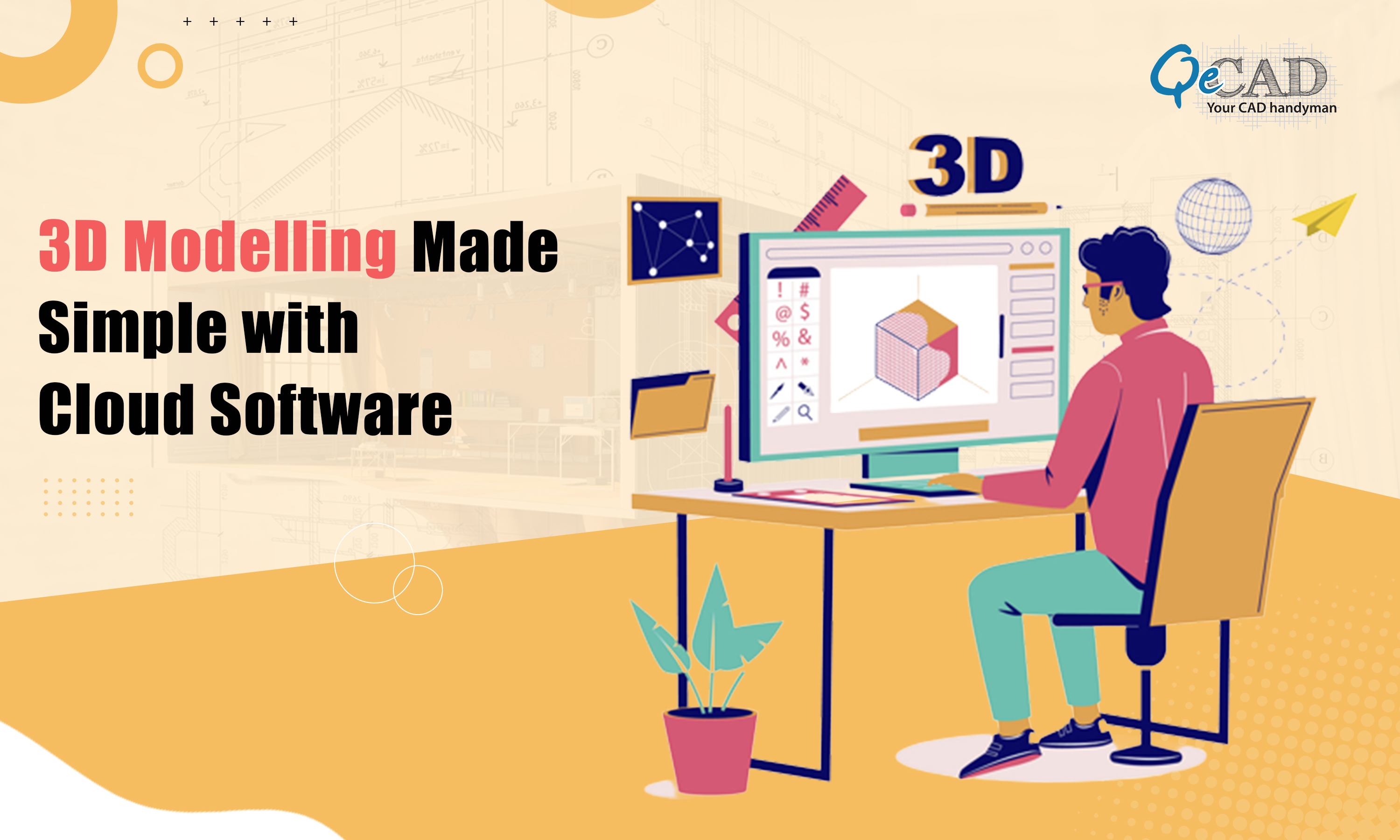
Introduction
Technology may have been instrumental in modifying conventional practices in the quickly changing fields of building and design. 3D modelling cloud software represents a single such breakthrough which has made tremendous headway. A revolutionary change in project visualisation, collaborating, as well as effectiveness is being observed in the building sector as a result of the development of Building Information Modelling (BIM) particularly its seamless association alongside cloud computing. This article explores the worldwide popularity of cloud-based 3D modelling software, examining how it affects 3D BIM Services as well as the benefits that it provides to general contractors.
The Rise of Cloud based 3D Modelling
The building sector has gone through a transformation thanks to cloud-based 3D modelling software that makes it simple for experts to generate, edit, and disseminate 3D models. Cloud-based solutions take use of all the flexibility, availability, as well as collaboration possibilities of cloud computing, in contrast to classic modelling software, which needed substantial computer capacity as well as physical infrastructure.
- Enhanced cooperation: Irrespective of the various stakeholders’ locations, cloud-based software enables immediate time cooperation among them. The newest 3D models might be accessed, comments may be submitted, plus choices may be decided collaboratively through the use of a single centralised location containing project information. Project execution is streamlined as well as communication gaps are decreased because of this flawless teamwork.
- Versatility and Cost Effectiveness: Cloud-based solutions do not require expensive hardware purchases or infrastructure upkeep. Employing the make monthly payments concept, organisations may scale resources according with project needs. Through this versatility, businesses may maximise their spending whilst gaining access to innovative technologies.
- Accessibility Anywhere, Anytime: The accessibility of cloud-based 3D modelling software represents one of its main benefits. Professionals may work anywhere they want since they may view their tasks through any gadget having a link to the internet. This adaptability boosts output, quickens making decisions, as well as guarantees the project’s completion on schedule.
The Power of BIM and Cloud-based 3D Modelling
Elegant construction projects are built on the sophisticated 3D model-based technique known as Building Information Modelling (BIM). During the construction project’s lifecycle, BIM proposes substantial benefits whenever integrated with cloud-based technologies.
- Streamlined Design and Planning: Using cloud-based BIM software, architects and engineers can produce precise, comprehensive 3D models. The dimensions, materials, as well as expenses of the project are included into these drawings. Design and planning phases becomes more efficient, lowering mistakes and reworking, through utilising BIM on the cloud.
- Enhanced Collaboration and Clash Detection: BIM models kept in the cloud make it possible for the many trades participating in a building project to work together and coordinate in real-time. Digital collision as well as conflict recognition enables early problem resolution, which reduces building duration and costs. The worldwide BIM market is anticipated to reach $12.7 billion by 2025, expanding at a CAGR of 13.2% from 2020 to 2025, accordance to a MarketsandMarkets analysis.
- Better Construction Management: By giving stakeholders quick accessibility to upgraded 3D models, cloud-based BIM improves construction management. By conveniently keeping records of modifications, communicating with subcontractors, while tracking the project’s progress, general contractors may reduce interruptions as well as promote effective decision-making. According to a poll by Autodesk, 73% of BIM for General Contractors reported that employing cloud-based collaboration tools enables firms to finish projects sooner.
Current Aspects and Industry Trends
BIM Services and cloud-based 3D modelling software usage are nevertheless still developing, with a number of market trends and current problems influencing how they are used.
- Merger of Artificial Intelligence (AI) and Machine Learning (ML): To improve 3D modelling capabilities, cloud-based software vendors have merged AI and ML technologies. In order to save time as well as increase accuracy, AI algorithms might streamline processes including model development, selecting materials, and collision detection. Massive data sets are analysed using ML algorithms to find trends and streamline building procedures, improving the results of projects.
- Mobile Applications and Augmented Reality (AR): Professionals may now examine, comment, and work alongside on models utilising their smartphones and tablets thanks to cloud-based 3D modelling software which is now available via mobile applications. Furthermore, stakeholders may overlaying virtual models on actual building sites through the incorporation of AR technology, which improves visualisation, design verification, and on-site decision-making.
Conclusion
The construction industry is entering an unprecedented period of effectiveness, cooperation, as well as cost-benefit analysis thanks to cloud-based 3D modelling software and BIM services. The combination of cloud computing with 3D modelling enables experts to collaborate easily, enhancing the project’s results or completing tasks on schedule and under budgets. For general contractors along with other stakeholders looking to remain abreast within the constantly changing world of construction, using cloud-based software and BIM services are going to be essential.
